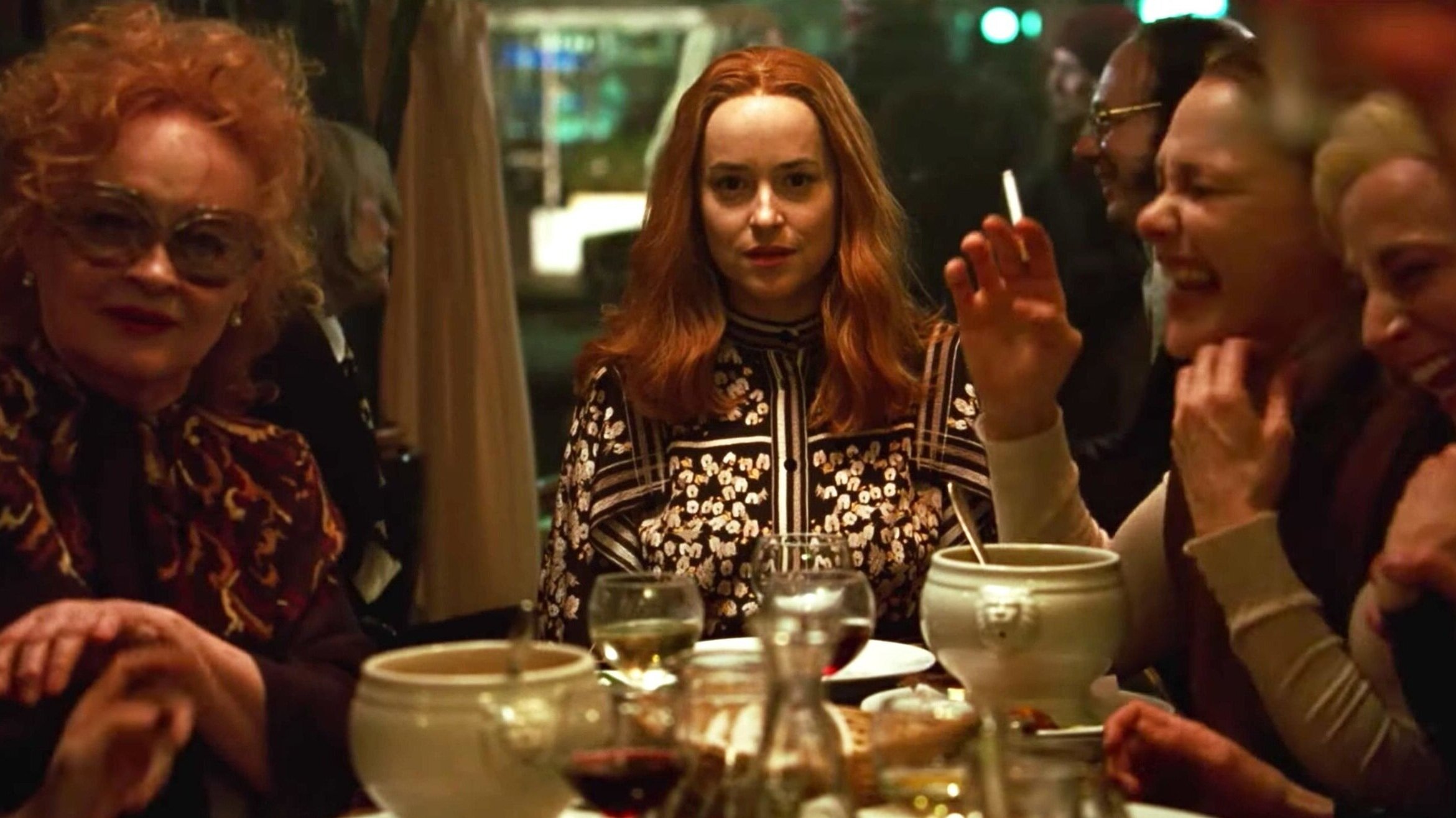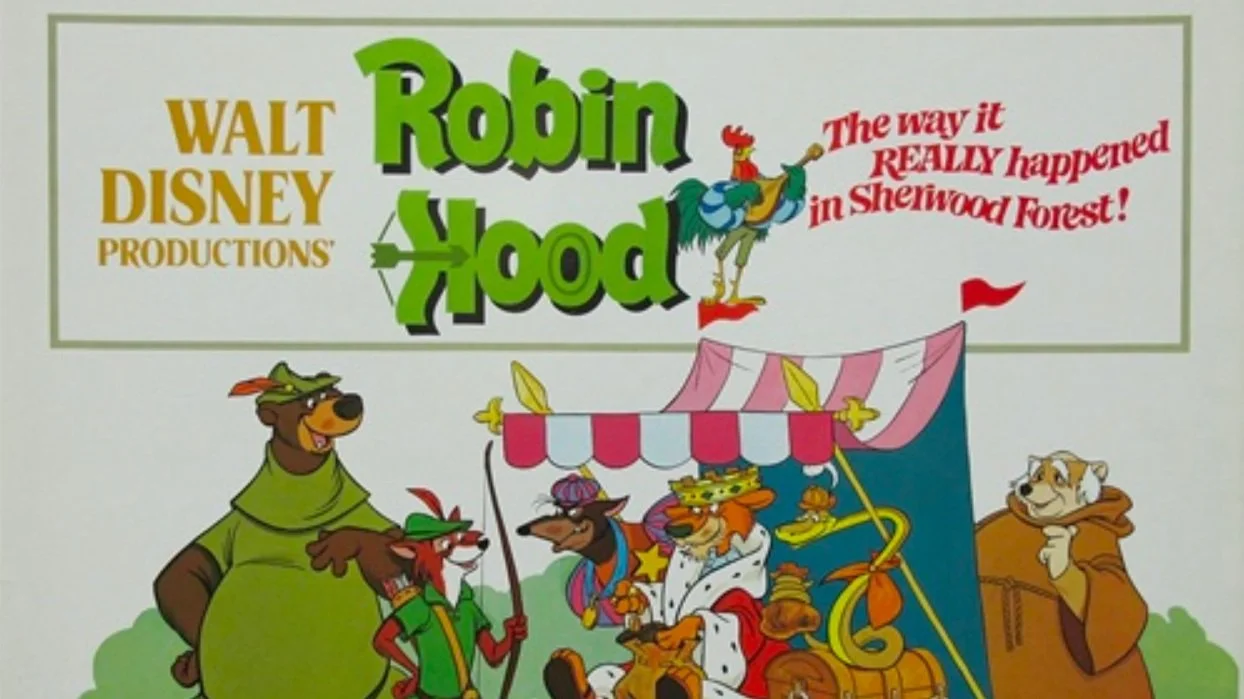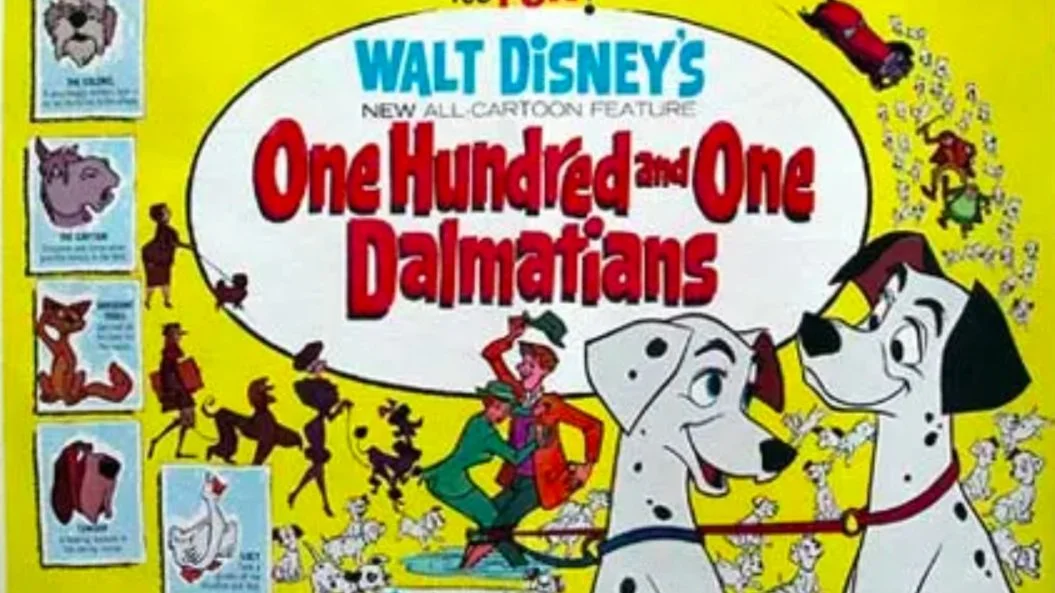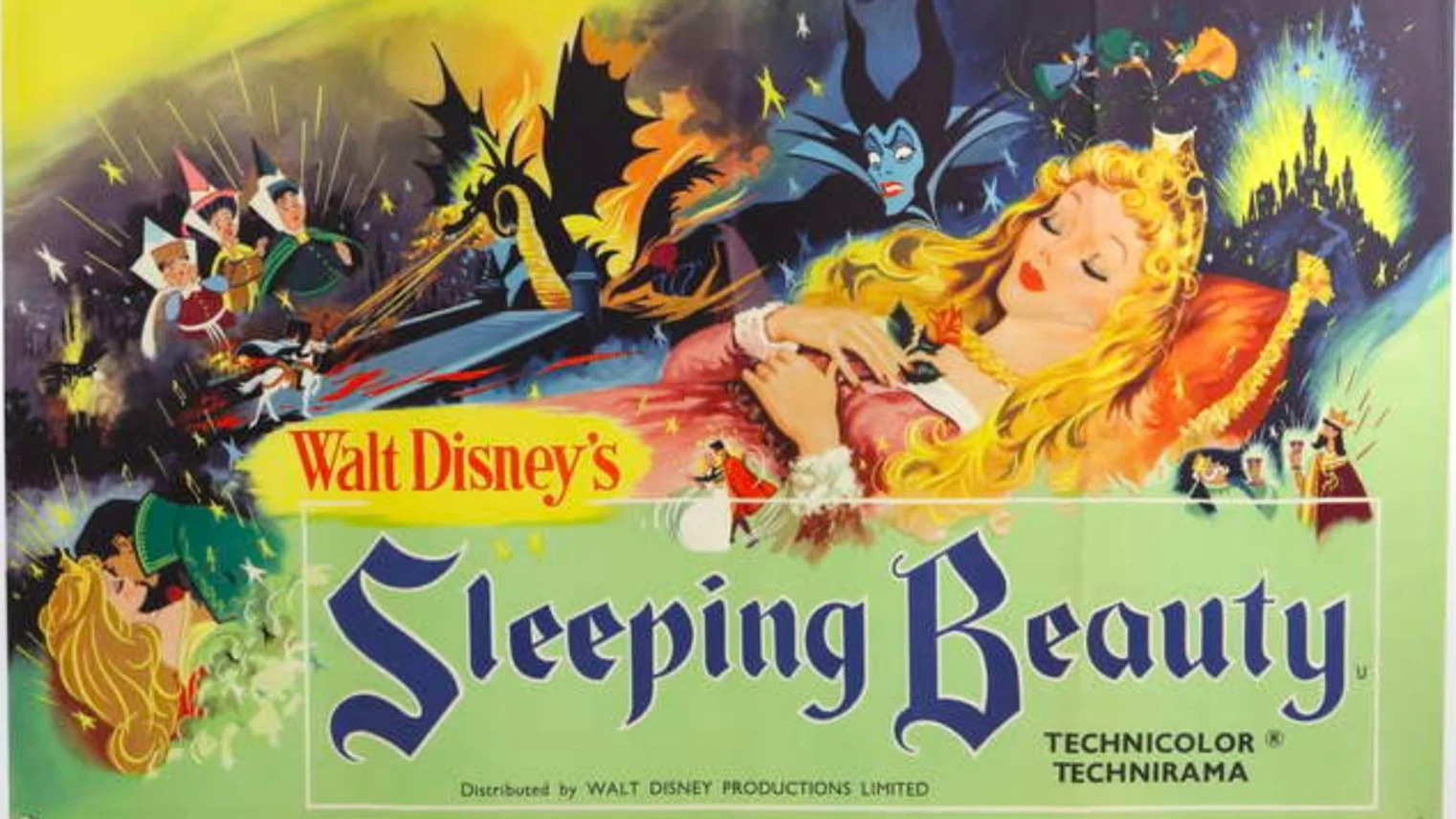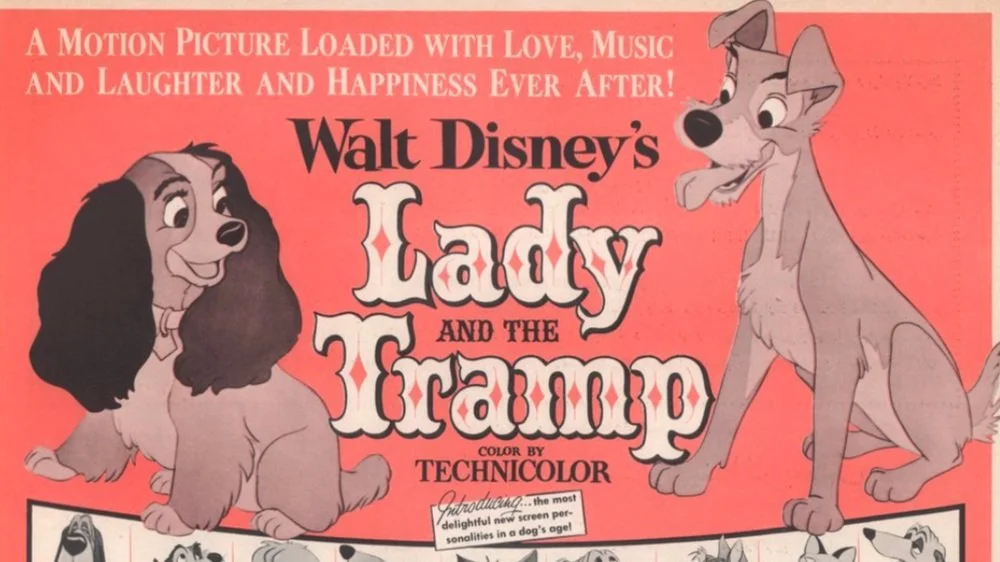Beyond the Final Girl: Suspiria and the Power of Witches
Though the 'woman as witch' has often been positioned as a comedic, absurd antagonist in fantasies and children’s stories, witches in modern horror often serve to present themes of patriarchal oppression. As one of the categories of the monstrous-feminine Barbara Creed writes on, the witch in horror is a direct link to not only female violence but violence towards women, harking back to the widespread killing of supposed ‘witches’ that, in some countries, still occurs today. As Creed points out in her seminal 1993 book The Monstrous Feminine: Film, Feminism and Psychoanalysis, the crimes that witches were accused of and punished for, including having sex with the devil and causing male impotence, “no doubt exemplify male fears of castration” - a common theme in depictions of the monstrous-feminine. In Luca Guadagnino’s 2018 remake of the iconic Dario Argento horror Suspiria, a prestigious dance school in Berlin is a cover for a group of witches who commit terrifying acts of violence. Framed against the backdrop of repressive 1970s Berlin, Guadagnino’s film aims to be an indictment of the very patriarchal structures that decided that women were witches; but in positioning the Markos Dance Academy’s witches as both the monstrous-feminine and liberated, powerful women, Suspiria invites a deeper reading of this common horror sub-genre.
While Creed argued that horror films such as Black Sunday, Carrie and even the original Suspiria presented witches as abject and horrifying, more recent offerings have leaned towards depictions which signify patriarchal oppression and the attempts of men to control women. In witch-horrors of the past, the witch was a symbol of the dangers of female sexuality; in Carrie, Carrie’s telekinesis is a result of her starting her period, with Creed noting that “woman’s blood is thus linked to the possession of supernatural powers[...] which hysterically and mythologically have been associated with the representation of woman as witch”. Like with most figures of the monstrous-feminine in traditional horror, the abject fear of the woman is linked to either her sexuality or her maternity, or both. The very idea of Argento’s Suspiria focusing on a coven of powerful, liberated, creative women who also commit horrible acts of violence, solidifies the notion of a very male fear of women. While films like Black Sunday, Carrie and Argento’s Suspiria present woman as witch as an abject, monstrous-feminine threat, recent horror films such as The Witch and Guadgnino’s Suspiria remake present witches with enough humanity to move past a simple generalization of witches = evil, commenting instead on the ways in which women suffer under the patriarchy.
In Guadagnino’s homage to Suspiria, the wide-eyed naivety of Argento’s original protagonist Suzy Bannion (Jessica Harper) is replaced by the character’s portrayal by Dakota Johnson as a talented, sensuous woman who, while initially nervous to audition for the school, soon flourishes under the mentorship of Tilda Swinton’s Madame Blanc, and is given the lead role in an upcoming performance. When Susie offers to dance the protagonist on her first day in the school, another dancer, Olga (Elena Fokina), has just stormed out the room — screaming “witches” at Madame Blanc and fellow teacher Miss Tanner, a comment the latter laughs off — and is led into another mirrored studio by an unseen influence. As Susie dances, the other students and Madame Blanc transfixed by her, Olga’s body meanwhile contorts uncontrollably, her limbs becoming more and more disjointed. Our first assumption is that Susie is unaware of the power she has through her movements, while Madame Blanc, supposedly transmitting a force to Susie before she begins dancing, seems to understand what’s happening to Olga. But as the film goes on, we get more hints that Susie isn’t simply at the school to dance; flashback sequences see a young Susie drawn to Berlin on a map, and later she seems to speak telepathically with Madame Blanc.
As Amelia Merrill writes, while “Argento’s unsuspecting protagonist Suzy (Jessica Harper) is a beautiful and meek heroine who seems unable to solve the puzzle of the haunted dance academy until the last available moment, Guadagnino’s Susie takes charge of her fate before the audience even realises it”. Indeed, in the original Suspiria, Suzy only decides to bring an end to the coven when she overhears a conversation about plans to use her body as a host for an elderly witch — in Guadingno’s iteration, Susie’s plan seems to have always been to infiltrate the coven. In the film’s blood-soaked climax, the coven’s plans to use Susie’s body as a vessel for the dying Mother Markos fail when Susie reveals herself to be Mother Suspiriorium, her purpose always having been to take over and become the new mother. While Guadagnino’s ending places Susie as the monstrous-feminine — destroying the coven and putting an end to the practices it followed — it also presents her as a liberated, powerful woman, finally free from the repression that her life has been defined by.
As revealed by writer David Kajganich, extensive research into the practices of punishing witchcraft made way for a script that, decidedly feminist in its narrative and the fact that the very few men who appear are those that the women of the coven torture, commented on the ways that patriarchal oppression and the mythology of withcraft go hand in hand. Kajganich stated that “[the patriarchy] takes its fear of the empowerment of women and creates a mythology for it”; ironically, the term ‘witch-hunt’ is increasingly used to describe movements such as #MeToo, though the idea of witches has historically only punished and hurt women. But in presenting the witches of Suspiria mostly as terrifying, violent women (though more than one is at one point conflicted by their horrifying practices), the film — with its male director and screenwriter inevitably prompting questions around the camera’s male gaze — and its intentions to provide a radical retelling of the witch in horror are complicated at best. As Chloe Germaine Buckley writes, due to the long-standing associations of the abject witch in horror film, “the figure of the witch proves problematic for feminist readings of horror, a form that has long-traded in images of the monstrous-feminine and female grotesque”.
However, Johnson’s Susie is undoubtedly separated from the other witches in the coven. While Creed stated that the witch “is usually depicted as a monstrous figure with its supernatural powers and a desire for evil”, Susie refrains from inflicting unnecessary pain onto others. And though Creed noted the witch’s “social functions as healer and seer have largely been omitted from contemporary portrayals”, Susie frees Sara (Mia Goth) and Patricia (Chloe Grace Moretz) by granting them a painless, swift death, directly contrasting to the physical (and in Patricia’s case, mental) torture we’ve seen infringed on the two dancers, and Olga, earlier on in the film. Susie can also be seen to be more perceptive than most of the characters, and arguably ‘sees’ the horrors of the coven before others such as Sara and the psychologist Dr. Klemperer (also played by Swinton). As Susie embraces her new role as the mother of the coven and dance school, she is joyful, exclaiming “this is beautiful”, and seemingly crying tears of relief and contentment. As with other modern depictions of witches in horror, Suspiria — a film which focuses solely on these women, their experiences and their plight — positions witchcraft as an escape from oppressive structures and a place to embrace womanhood. But as Merrill points out, the film’s disturbing, haunting ending “both celebrates and denigrates the liberated woman by associating her with witchcraft”. Indeed, witchcraft can be viewed as a terrifying, monstrous practice in the film — made clear by the violence we see done to several of the dancers, as well as Dr. Klemperer — but also as a route of emancipation from patriarchal maltreatment.
As Patricia’s therapist, when we first meet Dr. Klemperer, he listens to Patricia’s worries as she tells him, “She wants to get inside of me”. Klemperer doesn’t appear to take Patricia’s disturbing, cryptic concerns seriously, despite her clearly being extremely upset; later, one of the witches chastises Klemperer, stating, “When women tell you the truth you don’t pity them, you tell them they have delusions”. Men not believing women is a common occurrence in horror films, with the women in films such as The Lodge and The Invisible Man consistently told that their concerns are due to hysteria — a term once thought to be a condition only women could suffer from, literally deriving from the Greek for ‘of the womb’. Though Klemperer eventually realizes that Patricia’s earlier session with him was a desperate cry for help — as he becomes a victim for the witches’ sabbath in the finale — he repeatedly dismisses the worries of the women around him, so much so that Susie later refers to his late wife, Patricia, Sara and herself as “all the women of your undoing”. Just as in The Lodge and The Invisible Man, the women attempt to take matters into their own hands after the men around them refuse to listen; Sara ends up seeking out Patricia herself, before being tortured by the coven. Klemperer’s insistence on undermining the ‘women of his undoing’ signifies the dangers of the patriarchy, and though Susie spares him a violent (though not unpainful) ending, the coven’s treatment of the therapist confirms Guadagnino’s intentions of making a feminist film rooted in the mistreatment of women at the hands of men.
In Robert Eggers’ The Witch, Anya Taylor-Joy’s Thomasin is punished more so by the paranoid anxieties of her family — who spend most of the film chastising and eventually physically attacking her for her perceived witchcraft, alongside their fears over her sexuality — than by the actual coven of witches who seemingly stalk and psychologically torture the family. By the film’s end, when she is asked by a spirit from the coven if she wants “to live deliciously” (literally making a deal with the devil, a ‘crime’ many women were punished for when deemed to be witches), Thomasin chooses sexual liberation, even if it means siding with the group that killed most of her family. In Eggers’ film, the promise of freedom from the oppressive religious structures that caused her family to abandon her is a chance for a new life she has longed for; as she levitates from the ground with her fellow witches, she laughs hysterically, revelling in the prospect of “living deliciously” by being granted power and acceptance in the coven. But in Suspiria, a post-credits sequence shows Susie seemingly walking the streets of Berlin alone, looking off to something unseen in the distance; the glint in her eye from her charged interactions with Madame Blanc earlier in the film is gone, and while she is calmed by her new role in the academy and the freedom it grants her, her troubled past and the violence she’s seen are likely to haunt her. Interestingly, Argento’s original Suspiria featured one of the first examples of the Final Girl smile, as Harper’s Suzy walks away from the burning dance school and appears elated at what she has achieved. But in Guadagnino’s imagining, Susie’s ending is not so joyous, suggesting that the liberation hinted at through the film’s portrayal of witches is perhaps not possible without its sacrifices.
Representations of the witch in horror are still loaded not just with filmic baggage but also a long, painful history of witchcraft being used as a way to undermine, torture and kill women. Johnson’s Susie Bannion cannot only be defined as monstrous-feminine or as sexually liberated Final Girl; as a film (adapted from a male-directed classic) focusing wholly on women-as-witches but directed and written by men, Suspiria inevitably and uncomfortably places Susie, Madame Blanc and the other witches as an abject Other, even whilst positioning the witches as “paragons for women’s liberation”. In Creed’s rebuttal of the depiction of witches in horror, she notes that women are not, “by their very nature,” abject beings, and their representation as monstrous “is a function of the ideological project of the horror film — a project designed to perpetuate the belief that woman’s monstrous nature is inextricably bound up with her difference as man’s sexual other”. While Susie’s infiltration of the coven and the ways in which the women protect themselves from outside (male) oppressive forces may be liberating to both the witches and to the viewer, the witch in horror film is still a loaded characterization — regardless of Guadagnino’s feminist intentions.




